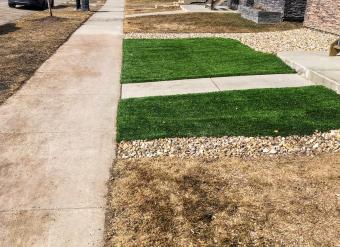
Wooden snowshoes have been around for thousands of years. The art and technology with which snowshoes are made have improved over the centuries, but the basic design has remained constant. Regardless of how they are made, snowshoes feature a broad platform for each foot that helps the wearer move easily over the snow.
A Little Wooden Snowshoe History
Snowshoes were invented by the indigenous peoples of the far north, who were able to extend their hunting range with this innovation. Native Americans made their snowshoes from bent saplings with rawhide straps.
Early snowshoes evolved into a long-tailed design to which the Ojibwa added a slightly curved front end that is still seen in wooden snowshoes today. As time passed, both materials and techniques used in making snowshoes improved. The tail was shortened, then abandoned. The new design, generally oval in shape with a solid deck, became known as the bearpaw.
Choosing The Right Snowshoes
Being fitted with the right type and size of snowshoe is very important. Some styles are suitable for a wide range of abilities, such as elongated bearpaws with rounded ends, and traditional Alaska-style snowshoes with a wide deck and tail. Other types have more specific uses and require more experience.
- For those working or trekking in forested areas, the traditional bearpaw or the extra-wide and flat Montagnay snowshoe is good for breaking trails and dealing with deadfall timber, stumps, and other obstacles. Such large snowshoes give the wearer a very stable gait while the short, rounded front keeps snow from accumulating. This type is more challenging to use, and should only be used by experienced snowshoers.
- The Ojibwa-type snowshoe is another tailed design that is narrower than the tailed Alaska-type. Also called the ski snowshoe because of the upturned nose and the long tail, this snowshoe is good for deep snow and open spaces, and is easier for novice snowshoers.
Showshoe Sizing

Snowshoe sizes are expressed in linear dimensions and load capacity. The greater the length and width of the snowshoe, the greater the load it can take.
To find your correct snowshoe size:
- Take your weight.
- Add the weight of any gear you may be carrying (such as backpacking equipment).
- Add those two weights together. That number will determine the size of shoe you will need.
For example, a man who weighs 250 pounds and is carrying a 40-pound pack will need a snowshoe that can handle a 290-pound load. If this person is going into a wooded area, he may choose a bearpaw snowshoe. For that model at that weight, the snowshoe would have to be 16-inches by 30-inches.
Each manufacturer has its own size chart, which can help you select the right snowshoe.
Wood vs. Aluminum
It is no wonder that snowshoes made from wood still enjoy high popularity. Wood offers great flexibility in design. It is as strong as aluminum tubing and only a little bit heavier. Because the wooden frame is solid, it cannot fill with water or freeze.
Perhaps the best feature offered by wooden snowshoes is the fact that they are quiet. Part of the beauty of snowshoeing is the quiet communing with nature that the sport can offer. How can that happen with the rattle-and-click of aluminum shoes? Here the wooden snowshoe reigns supreme.
Decks and Binding
Modern snowshoes tend to have solid decks and neoprene lacing. While this style can be easier to construct and maintain than snowshoes made from wood, the advantages offered by a light frame can be easily lost to accumulated snow on the deck. Traditional wooden snowshoes usually have an open lace deck and leather or rawhide lacing.
Snowshoe lacing can be full-grain or split leather.
- Full-grain means that the entire thickness of skin is used in making the leather. Surface markings of the animal hide are visible and the leather has a rich color.
- Split leather refers to the leather remaining after the top layers have been removed for other, more expensive products. It does not have the distinctive hide markings seen in full-grain leather, and the color is usually achieved through dyes.
Snowshoers should be aware that full-grain leather, while more expensive, is considerably stronger and more durable than split leather.
A Last Thought on Wooden Snowshoes
Snowshoeing is one of the fastest-growing winter sports today, with casual hikers, wilderness trekkers, and racers found throughout the snowy north. Whether you are looking for a race or simply solitude on a trek into the winter wilds, wooden snowshoes offer a level of flexibility, comfort, and reliability that is hard to beat.







